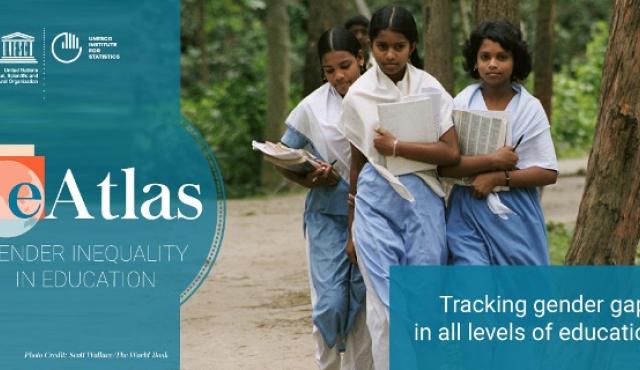Get the Latest Data on Girls’ and Women’s Education: UIS Releases New Edition of UNESCO eAtlas on Gender Inequality in Education
Share
31/05/2019
As policymakers and advocates from around the world gather for the Women Deliver Conference (Vancouver, Canada, 3-6 June), the UNESCO Institute for Statistics (UIS) has released a new edition of the UNESCO eAtlas of Gender Inequality in Education to highlight the latest data.

As policymakers and advocates from around the world gather for the Women Deliver Conference (Vancouver, Canada, 3-6 June), the UNESCO Institute for Statistics (UIS) has released a new edition of the UNESCO eAtlas of Gender Inequality in Education to highlight the latest data.
The eAtlas presents a wide range of UIS data on school completion, exclusion, literacy and fields of study disaggregated by sex. Through the interactive maps and ranking tables, readers can explore the educational pathways of girls and boys in more than 200 countries and territories. The update presents the latest internationally-comparable data on education, released by the UIS in February 2019.
Discussions amongst the influencers attending the largest global conference on gender will center around the health, rights and wellbeing of girls and women. Education plays a crucial role in empowering girls and women. But how far do countries still need to go to ensure that every girl has access to education and every woman is literate and equipped with digital skills?
UIS data show tremendous progress. Southern Asia has made the greatest strides in reducing the gender gap in education, where a girl can now expect to receive 12 years of education compared to just 6 years in 1990. Boys in the region have similar school life expectancy rates.
But significant challenges remain, with wide disparities still found across countries mainly in South-Eastearn Asia and sub-Saharan Africa. For example, in Eritrea, Djibouti, the Central African Republic and Niger, girls receive less than 6 years of schooling.
The UNESCO eAtlas of Gender Inequality in Education is available in English, French and Spanish. The interactive maps can be easily embedded into websites and blogs.